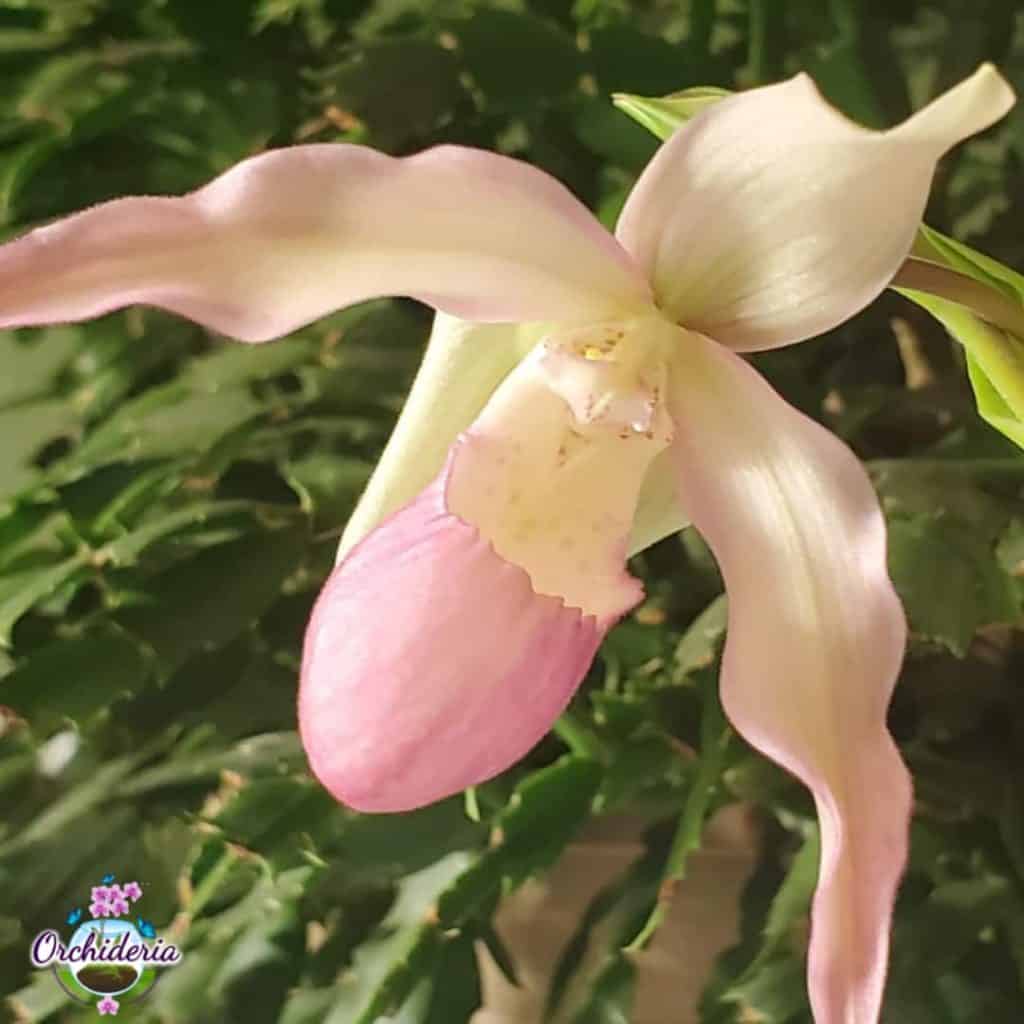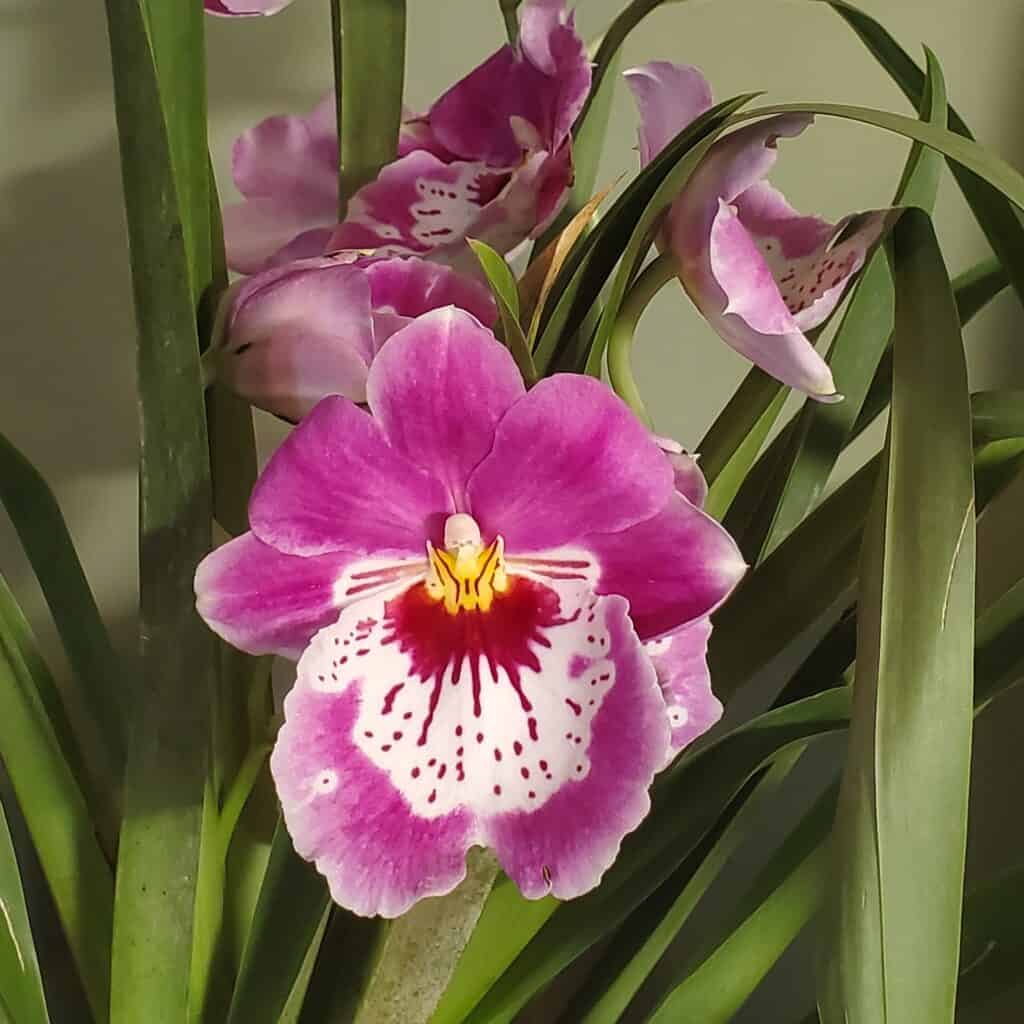Does Molasses Help the Orchid Grow?
Adding molasses to orchids can have several benefits for their growth and overall health. Firstly, sugar acts as a source of energy for the orchid. Just like humans, plants need energy to carry out their metabolic processes, and sugar provides a readily available source of energy for the orchid to utilize.
Secondly, the sugar in the molasses can stimulate microbial activity in the orchid’s root zone. The presence of sugar in the water can attract beneficial microorganisms, such as bacteria and fungi, that help break down organic matter and release nutrients in a form that the orchid can absorb. This microbial activity can improve the nutrient availability and uptake for the orchid, leading to enhanced growth and development.
Lastly, sugar can also improve the orchid’s resistance to stress. When an orchid is exposed to unfavorable conditions, such as extreme temperatures or drought, it can experience stress. By providing sugar in the water, the orchid’s stress response mechanisms can be activated, helping it to better cope with these challenging conditions and maintain its health.
Overall, adding molasses to water for orchids can provide them with an energy boost, enhance nutrient availability, and improve stress tolerance. However, it’s important to note that sugar should be used in moderation and as part of a balanced fertilization and care routine for orchids.

What is Orchid Food?
Orchids are unique plants that require more than just water and sunlight to thrive. While these elements are essential, orchids also need additional nutrients to support their growth and development. This is where fertilizers come into play. Fertilizers provide orchids with the necessary nutrients they need to flourish.
One important aspect to consider when choosing a fertilizer for orchids is the NPK ratio. NPK stands for nitrogen (N), phosphorus (P), and potassium (K), which are the three main nutrients that plants require in varying amounts. Orchids typically require a fertilizer with a higher phosphorus content, as this nutrient promotes healthy root development and flowering.
In addition to the NPK ratio, orchids also benefit from other essential nutrients such as calcium, magnesium, and trace elements like iron and manganese. These nutrients help to support overall plant health and ensure proper growth.
While water and sunlight are important for orchids, they alone cannot provide all the necessary nutrients for optimal growth. Fertilizers help to supplement these natural elements and provide orchids with the nutrients they need to thrive. By understanding the importance of fertilizers and the specific nutrient requirements of orchids, you can ensure that your orchids receive the proper care and nutrition they need to flourish.
When these fertilizers are not available, is it okay to add homemade remedies, like banana peels , garlic water
, garlic water , rice water
, rice water , and even molasses diluted it the water?
, and even molasses diluted it the water?
The Benefits of Using Molases on Orchids
Using molasses as a fertilizer for orchids offers several benefits that contribute to their overall growth and health. Here are five key properties of molasses that make it beneficial for orchids:
1. Leaf Growth: Molasses contains essential nutrients, including nitrogen, phosphorus, and potassium, which are vital for leaf development. These nutrients promote the growth of healthy, vibrant leaves, enhancing the overall appearance of the orchid.
2. Potassium (K) Content: Orchids require potassium for various physiological processes, such as photosynthesis, enzyme activation, and water regulation. Molasses is a rich source of potassium, providing the necessary nutrients for optimal orchid growth.
3. Root Health: Molasses can benefit orchids with severe root problems, such as root rot. The intake of glucose from molasses stimulates the growth of beneficial microorganisms in the soil, which help combat root diseases and improve overall root health.
4. Microbial Activity: Molasses acts as a natural stimulant for beneficial soil microbes. These microbes break down organic matter, releasing nutrients that are readily available for the orchid’s uptake. This increased microbial activity enhances nutrient availability and promotes a healthy soil ecosystem.
5. Soil Fertility: The organic matter in molasses enriches the soil, improving its fertility and structure. This leads to better water retention, aeration, and nutrient absorption, creating an optimal environment for orchid growth.
In summary, molasses benefits orchids by promoting leaf growth, providing essential nutrients like potassium, aiding in root health, stimulating microbial activity, and enhancing soil fertility. Incorporating molasses into your orchid care routine can contribute to their overall well-being and help them thrive.

How Many Times Should I use Molasses for My Orchid?
Adding molasses to orchids should not be an everyday procedure. It is important to use the sugar method strategically to maximize its benefits for your orchid’s growth and health. Here are three situations where using molasses can be particularly beneficial:
1) When unboxing an orchid: When you bring home a new orchid, it may have undergone some stress during transportation. Adding molasses to the water can help the orchid recover from this stress and adapt to its new environment more quickly.
2) When in shock treatment for intensive recovery: If your orchid is experiencing severe stress or damage, such as from pests or diseases, a shock treatment with molasses can provide a boost of energy and nutrients to support its recovery process.
3) When the orchid has limp leaves: Limp leaves can be a sign of dehydration or nutrient deficiency. Using molasses in the water can help revive the orchid by providing it with the necessary energy and nutrients to regain its vitality.
However, it is important to note that molasses should not be used excessively. Using it once every three months is generally sufficient to provide the orchid with the benefits of sugar without overloading it. Remember to always monitor your orchid’s response and adjust the frequency of molasses use accordingly.
By using molasses strategically and in moderation, you can enhance your orchid’s growth, resilience, and overall health.
How to Make Molasses Water
To make molasses water for your orchids, follow these simple steps:
1. Gather your materials: You will need molasses, water, and a container for mixing.
2. Choose the right molasses: Opt for unsulfured molasses, as sulfured molasses can harm your orchids. Look for organic or natural options for the best results.
3. Dilute the molasses: Mix one tablespoon of molasses with one gallon of water. Stir well to ensure the molasses is fully dissolved.
4. Adjust the concentration: Depending on your orchid’s needs, you can adjust the concentration of molasses in the water. For a stronger solution, use two tablespoons of molasses per gallon of water. For a milder solution, use half a tablespoon.
5. Water your orchids: Pour the molasses water mixture into a watering can or spray bottle. Water your orchids as you normally would, ensuring that the roots and soil are thoroughly moistened.
6. Monitor your orchids: Observe how your orchids respond to the molasses water. Look for signs of improved growth, vibrant blooms, and overall health. If you notice any negative effects, such as wilting or yellowing leaves, reduce the concentration of molasses or discontinue use.
Remember, moderation is key when using molasses water for your orchids. It is recommended to use this mixture once every three months to avoid overloading your plants with sugar. By following these steps, you can provide your orchids with the benefits of molasses and promote their growth and vitality.
Why Does My Orchid React Well to Molasses?
If your orchid reacts well to the extra sugar in the water, it could be an indication that it is not producing enough sugar through photosynthesis. Photosynthesis is the process by which plants convert light energy into chemical energy in the form of sugars. The light levels that your orchid receives play a crucial role in this process.
When light levels are insufficient, the orchid may not be able to produce enough sugars to meet its energy needs. As a result, providing it with molasses water can help supplement its sugar requirements. However, it’s important to note that this should not be a long-term solution.
To address this issue, you may need to increase the light levels that your orchid receives. Placing it in a location where it can receive morning sun by a window can help provide the necessary light for photosynthesis. Be cautious not to expose your orchid to direct sunlight during the hottest parts of the day, as this can cause damage to the leaves.
By ensuring that your orchid receives adequate light, you can help promote its ability to produce its own sugars through photosynthesis. This will not only reduce its reliance on external sources of sugar like molasses but also contribute to its overall health and vitality. Remember to monitor your orchid’s response to the increased light levels and make adjustments as needed.
Can I Replace a Store-bought Fertilizer for Molasses?
While molasses can be a beneficial supplement for orchids, it is important to note that it should not be used as a replacement for a balanced store-bought fertilizer. A balanced NPK fertilizer, which contains nitrogen (N), phosphorus (P), and potassium (K), is essential for the overall health and growth of orchids. These nutrients play a crucial role in supporting various aspects of the plant’s development, such as leaf growth, root development, and flower production.
Even if you choose to use molasses, banana peels, eggshells, garlic, or any other homemade fertilizers, it is still recommended to incorporate a balanced NPK fertilizer into your orchid care routine. These store-bought fertilizers are specifically formulated to provide the necessary nutrients in the right proportions for optimal orchid growth.
However, it is important to use these fertilizers in tiny doses, as orchids are sensitive to excessive nutrients. Over-fertilizing can lead to nutrient burn and damage to the orchid’s roots. Therefore, it is crucial to follow the instructions provided by the manufacturer and dilute the fertilizer accordingly.
In conclusion, while molasses and other homemade fertilizers can be used as supplementary options, a balanced NPK fertilizer is still the best choice for providing the essential nutrients that orchids need. By using a combination of both, you can ensure that your orchids receive a well-rounded nutrient profile for healthy and vibrant growth.
Don’t Stop Learning!
If you want to be included in more information and get a 14-page fertilization guide, please sign up for my newsletter. I don’t spam, but send emails out bi-monthly with some curious topics of interest. If you want more information, click here to go to a specific page on this website where I explain it more in detail.

Also, if you are looking for an orchid journal to keep your notes specifically about orchid care, check out my 2 solutions for that on this page. If note-keeping isn’t your thing, then there is a free excel spreadsheet that you can download. Click here for more information on how to do that.
If you subscribe to my newsletter, I will send you a 14-page guide on the main tips of orchid fertilizer. It is downloadable and you can print it out on your computer. I designed the guide to double up as a coloring book, just to make it fun.
If I Don’t Have Molasses, What Else Can I Use to Boost my Orchid?
If you don’t have molasses on hand, there are several alternatives you can use to boost your orchid’s growth. One option is to use any source of diluted sugar water, such as honey, sugar, or brown sugar. These sweet substances can be used as a replacement for molasses in providing the necessary nutrients for your orchid.
It’s important to note that while honey can be used as a substitute, the sugar in honey is more complex and takes longer for the orchid to break down. On the other hand, molasses contains simpler sugars that are readily available for the orchid to absorb and utilize.
Glucose is the key component that fuels an orchid’s growth, and it is produced through the process of photosynthesis. By providing your orchid with a source of sugar water, you are essentially supplying it with the fuel it needs to thrive and develop.
Will Molasses Attact Ants?
Molasses is not known to attract ants. In fact, it can act as a repellent for these pesky insects. Ants are generally attracted to sweet substances, but molasses has a strong and distinct flavor that ants do not find appealing. The thick consistency and rich aroma of molasses make it unattractive to ants, deterring them from approaching your orchids.
The strong scent of molasses can also act as a deterrent for other pests, including cats. Cats are known to be curious creatures, and they may be attracted to the smell of certain substances. However, the strong and distinct odor of molasses can repel cats, preventing them from getting too close to your orchids.
Can Molosasses Harm My Orchid?
While molasses offers numerous benefits to orchids, it is important to consider the potential drawbacks and understand that it may not be suitable for every orchid. One contrasting idea is that molasses can harm orchids if used in excessive amounts or if the orchid is sensitive to the sugars present in molasses.
Firstly, overusing molasses can lead to an imbalance in the soil’s nutrient composition. Orchids require a delicate balance of nutrients, and an excess of certain elements, such as nitrogen or potassium, can hinder their growth. It is important to use molasses in moderation to prevent nutrient imbalances that may harm the orchid’s overall health and development.
Secondly, some orchids may be more sensitive to the sugars present in molasses. While molasses can stimulate microbial activity and promote healthy soil, certain orchid species or varieties may not respond well to the sugars in molasses. It is important to observe the orchid’s reaction when using molasses and adjust the dosage accordingly. If you notice any negative effects, such as wilting or discoloration, it may be necessary to reduce or discontinue the use of molasses.
In summary, while molasses can be beneficial for orchids, it is essential to exercise caution and consider the specific needs of your orchid. Moderation is key when using molasses as a fertilizer, and it is important to monitor the orchid’s response to ensure it is not being harmed.
By understanding the potential drawbacks, you can make an informed decision about whether molasses is suitable for your orchid’s care routine. Remember to always prioritize the health and well-being of your orchid.
Thank you for reading and happy cultivating!

